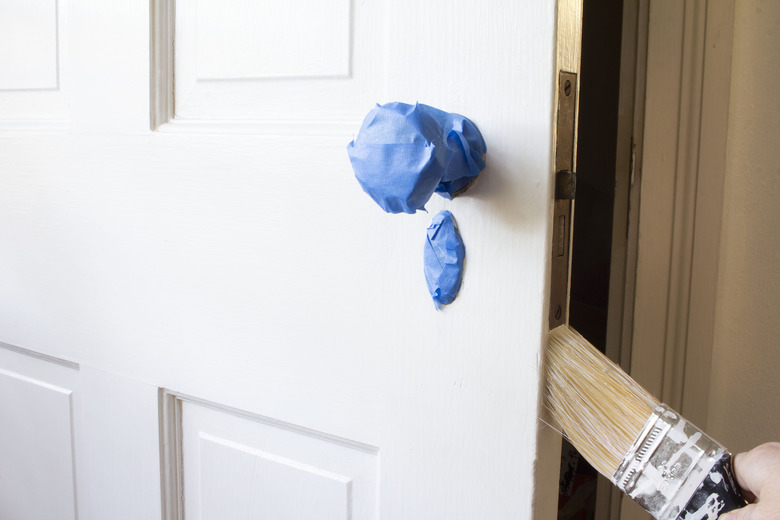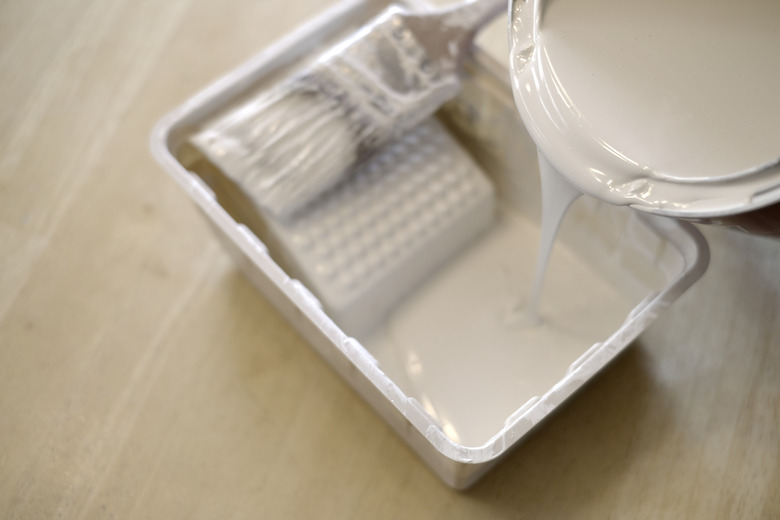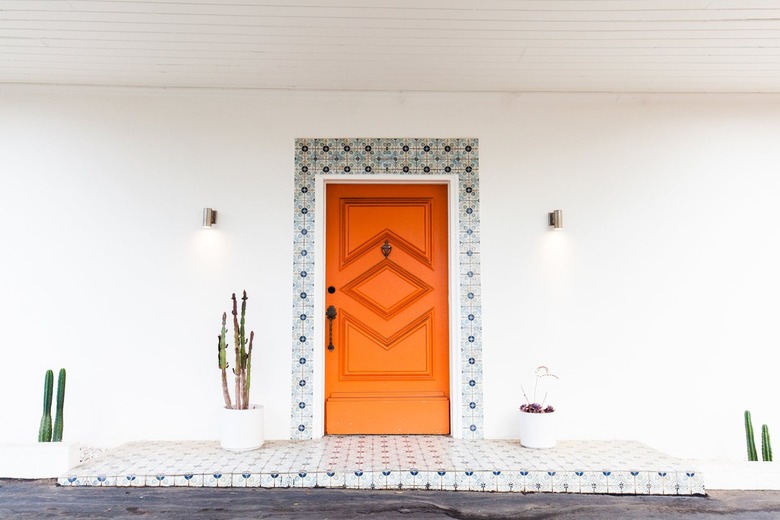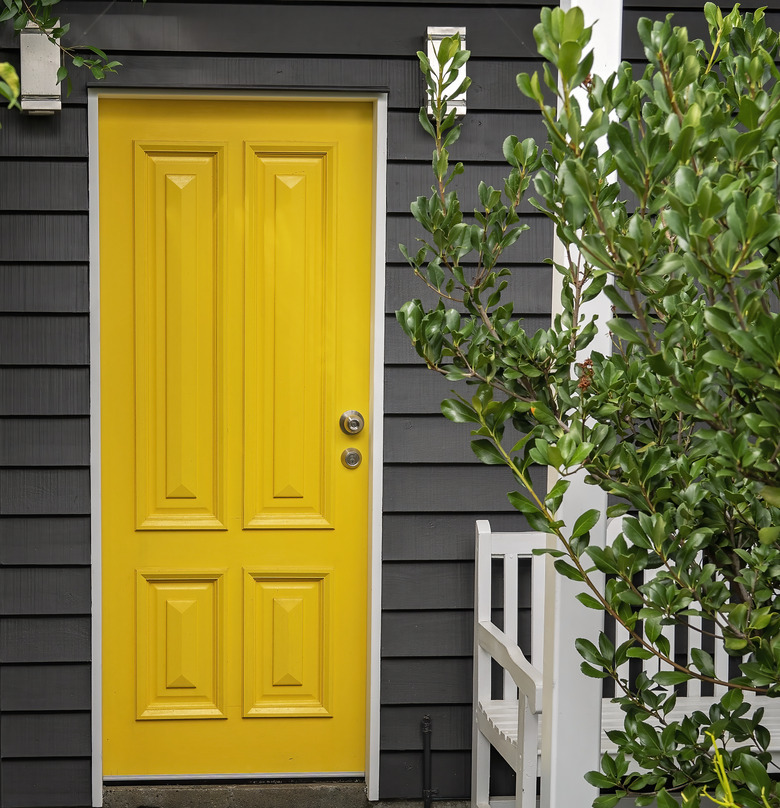What Type Of Paint Should You Use On Doors?
We may receive a commission on purchases made from links.
You've decided to paint your front door — that's the easy part. Now you've got to decide which paint is best for the job. You'll be able to choose either water-based paint (a.k.a. "latex" paint) or oil-based (alkyd) paint. Oil-based paint leaves fewer brush strokes, but latex paint dries faster and has lower levels of volatile organic compounds (VOCs), which have been identified as cancer-causing agents.
But beyond choosing between oil and water-based paint, the type of paint you should use on the front door will depend on the door's surface and the previous paint that was on the door.
Oil-Based vs. Water-Based Paint
Oil-Based vs. Water-Based Paint
While formulations of water-based paint are continually improving, there are still some differences in performance between traditional oil-based paint and its water-based counterparts.
Oil-based paint:
- Dries smoother
- Wears longer
- Flows better
- Penetrates and adheres to the surface better
- Cleans up with turpentine, acetone, or mineral spirits
- Takes 8 to 24 hours to dry
Water-based paint:
- Dries faster
- Smells less
- Is nonflammable
- Better color retention
- Expands and contracts for less peeling
- Cleans up with soap and water
- Takes 1 to 6 hours to dry
Given the dry-time alone, DIYers may immediately choose water-based paint, but the surface of the door, previous paint and desired sheen should also be considered.
Consider the Door Surfaces
Consider the Door Surfaces
Doors may be wood, metal, or fiberglass. Oil-based paints work better on stained surfaces and on "bleeding" woods that ooze sap or tannin, such as cedar, cypress, or redwood. Oil-based paints are better than water-based at preventing rust on metal doors, such as steel storm doors. Fiberglass doors are good candidates for water-based paint.
What Is the Previous Paint?
What Is the Previous Paint?
If your door is in good shape, with no cracking or peeling paint, you may be able to paint over the door with very little preparation. If this is the case, you must know the base of the last layer of paint applied to the door. Do not apply oil-based paint over a layer of water-based paint. You can, however, paint water-based over oil-based paint.
To determine what kind of paint was previously used on the door, pour a small amount of rubbing alcohol on a clean white rag or cotton ball, then rub the damp rag back and forth on a small, inconspicuous section of the door. If you see paint on the rag, the last paint used was water-based. If you don't see any paint on the rag, it was oil-based.
When in doubt about the old paint, you can always give yourself a fresh start with a coat of primer, which comes in formulations to bond to both oil-based and water-based paint; ask for recommendations at a quality paint store. If the door has not been previously painted, primer is highly recommended to ensure a good bond and the best coverage for the paint finish.
Warning
Painting a door with water-based paint that has four or more previous coats of oil-based paint may cause the paint to crack. In this case, stick with oil-based paint.
Choosing the Best Paint Sheen
Choosing the Best Paint Sheen
After selecting your paint type, you need to determine whether to buy indoor or outdoor paint — or an indoor/outdoor combo — and the sheen you want for your door. Indoor vs. outdoor is an easy decision: If you're painting an exterior — outside — door, use exterior paint. Inside doors can be painted with interior paint. If you want to paint an entry door the same color inside and outside, you don't have to buy two different kinds of paint. Just use an interior/exterior combo.
Some homeowners love a shiny red door, while others prefer a muted green. For this reason, sheen is a matter of personal choice.
Consider these facts to help you determine which is best for your door:
- Flat/matte finish is good for hiding imperfections in low-traffic areas.
- Eggshell is basically flat with just a little luster. It is recommended for medium-traffic areas.
- Satin has a light shine and is tough enough to endure high-traffic areas and survives repeated cleanings.
- Semi-gloss has a highly durable finish and is often recommended for trim.
- High-gloss is the most durable and is recommended for doors because of its tough enamel-like finish.
Based on these traits, exterior doors should be painted with semi-gloss or high-gloss paint. Interior doors are typically painted with semi-gloss for its relatively high durability without the extreme luster of high-gloss. Paint any door frame — exterior or interior — in high-gloss or semi-gloss to match the paint sheen used on the door.



